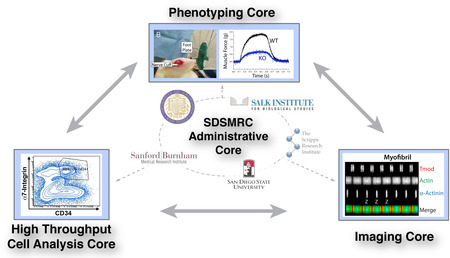NIH Grant Awarded to Start New Muscle Center in San Diego
October 10, 2011
The National Institute of Health (NIH) has awarded a P-30 grant to Richard Lieber, Ph.D., Professor of Orthopaedics and Bioengineering and Vice-Chair of the Department of Orthopaedic Surgery, for the creation of the San Diego Skeletal Muscle Research Center (SDMRC) as part of the Institute for Engineering in Medicine (IEM). This prestigious grant will bring together twenty-one scientists spanning five research institutions and nine academic departments to advance our understanding of skeletal muscles and the numerous ailments associated with muscle diseases.

The new center will enable the skeletal muscle research community in San Diego to synergize the various local research institutes’ state-of-the-art methods to accelerate cutting-edge research in an efficient, cost-effective, and timely manner. The multidisciplinary nature of skeletal muscle research provides accessibility to new methods and new collaborations that the new center will provide. The institutions that will participate include The Salk Institute, Sanford-Burnham Medical Research Institute, San Diego State University, the Scripps Research Institute, and the University of California, San Diego.
The new San Diego Skeletal Muscle Research Center (SDMRC) will converge three “cores” that span five different local world-class institutions that specialize in phenotyping, high throughput cell analysis, and imaging.
The expertise of these various world-class institutions will be pooled into three “cores” (Phenotyping, High Throughput Cell Analysis, and Imaging) directed by an administrative core. By bringing together these advanced techniques in the three cores, “no scientist has to ‘reinvent the wheel’ to perform the sophisticated analyses [required in skeletal muscle research],” Dr. Lieber explains. Such accessibility “will undoubtedly spawn new ideas that accompany the experimental data,” Lieber continues. As a result, researchers will be able to greatly enhance our understanding of muscles and muscle diseases – a key concern for the researchers and the NIH.